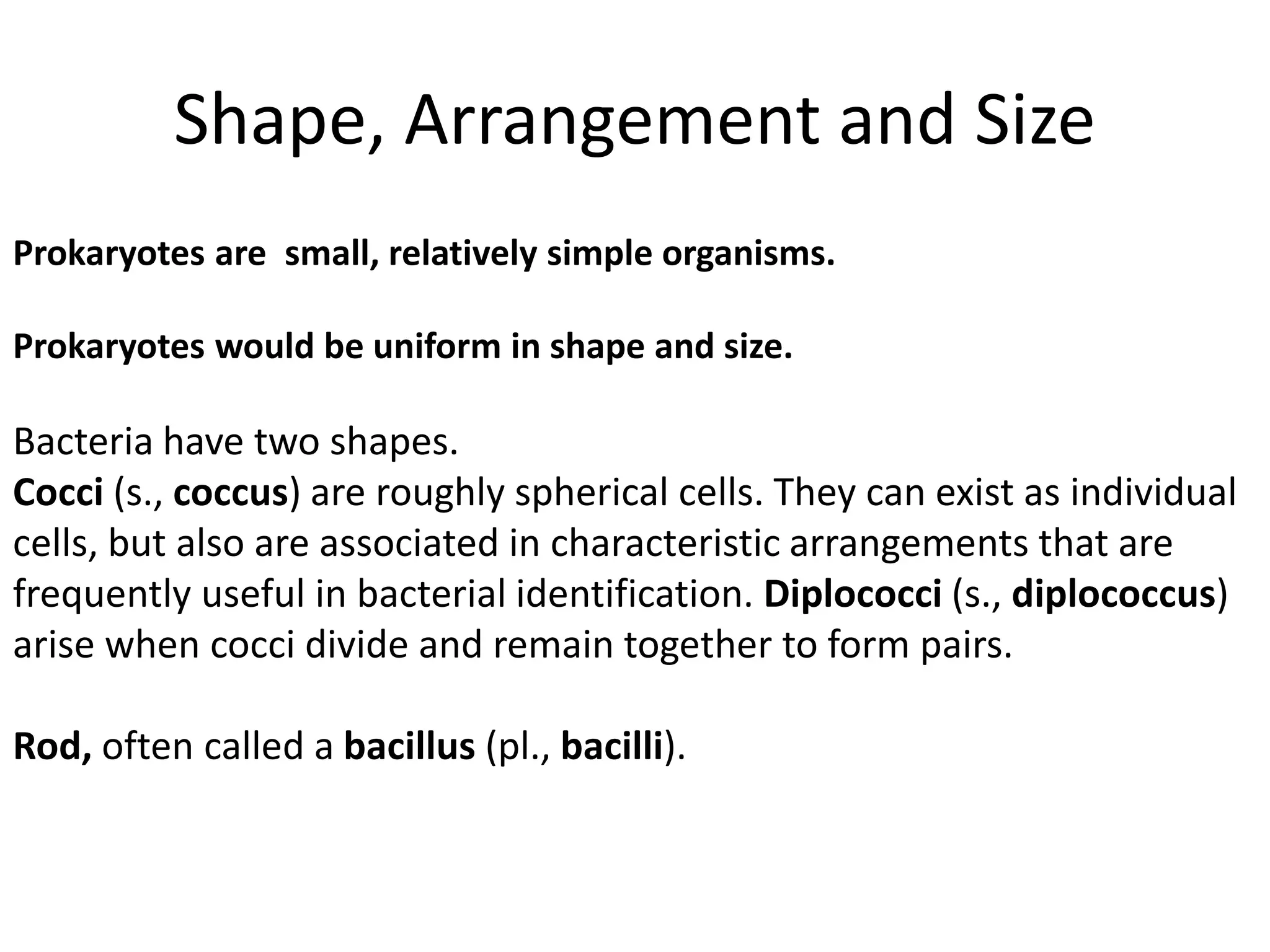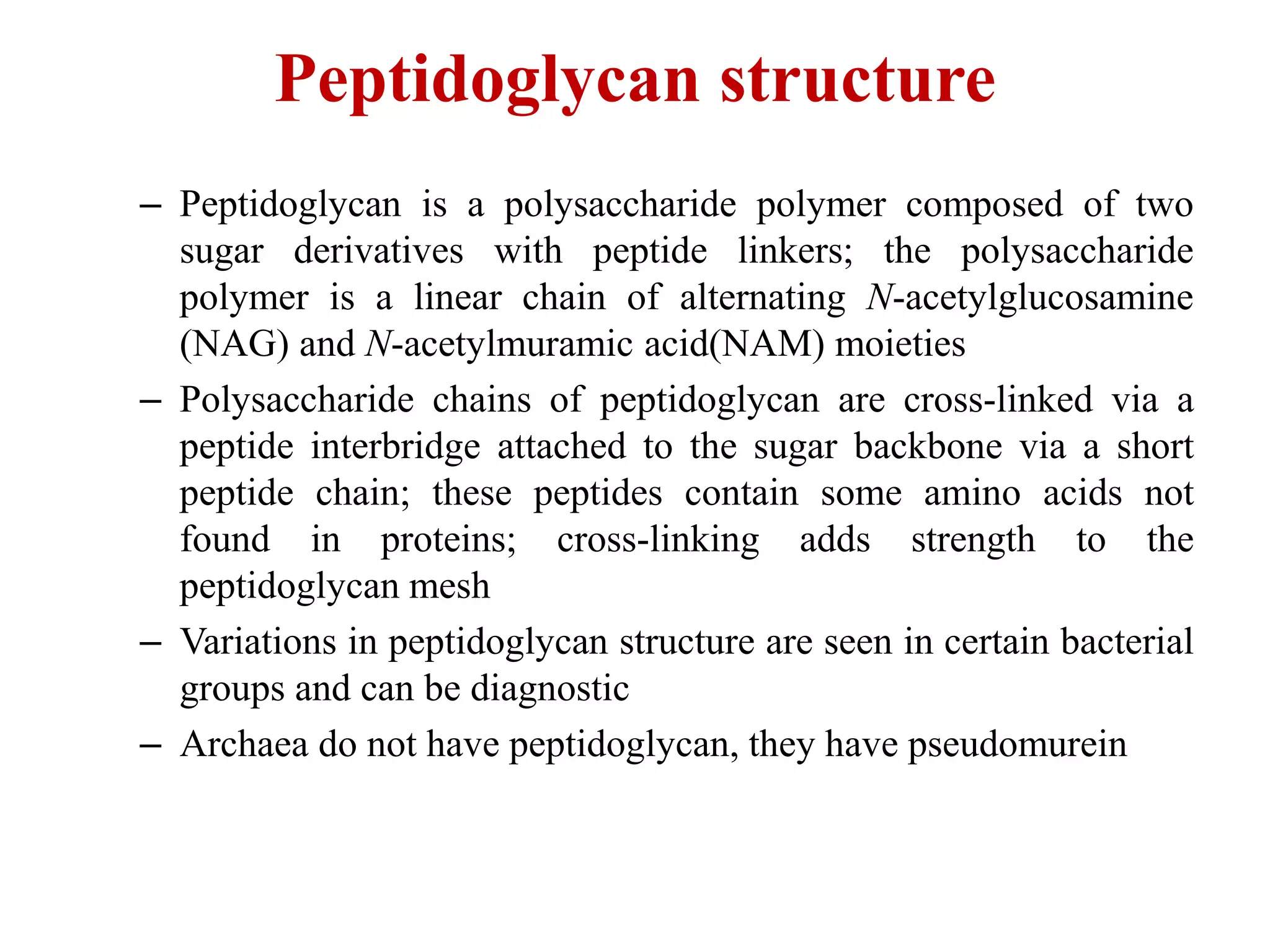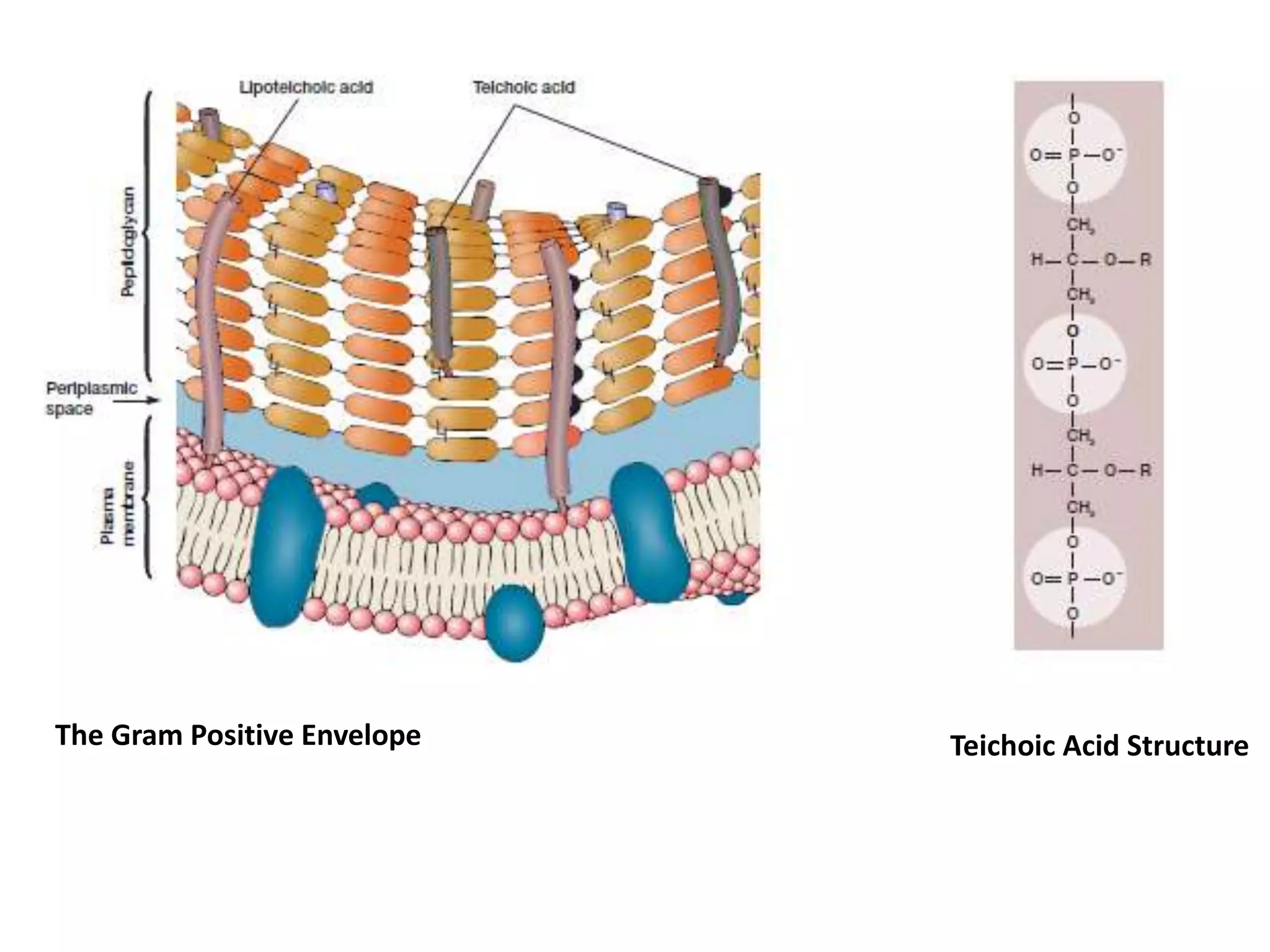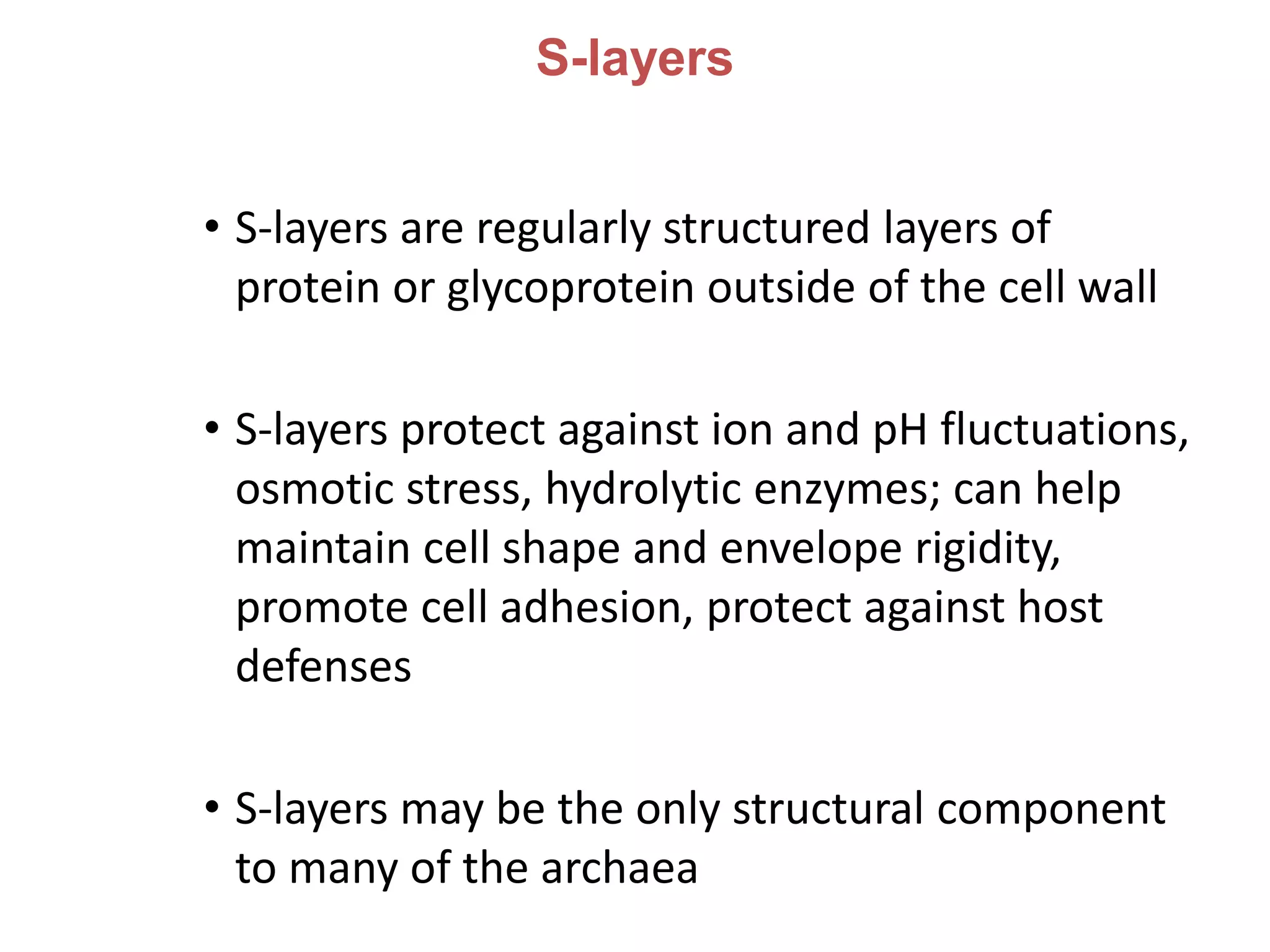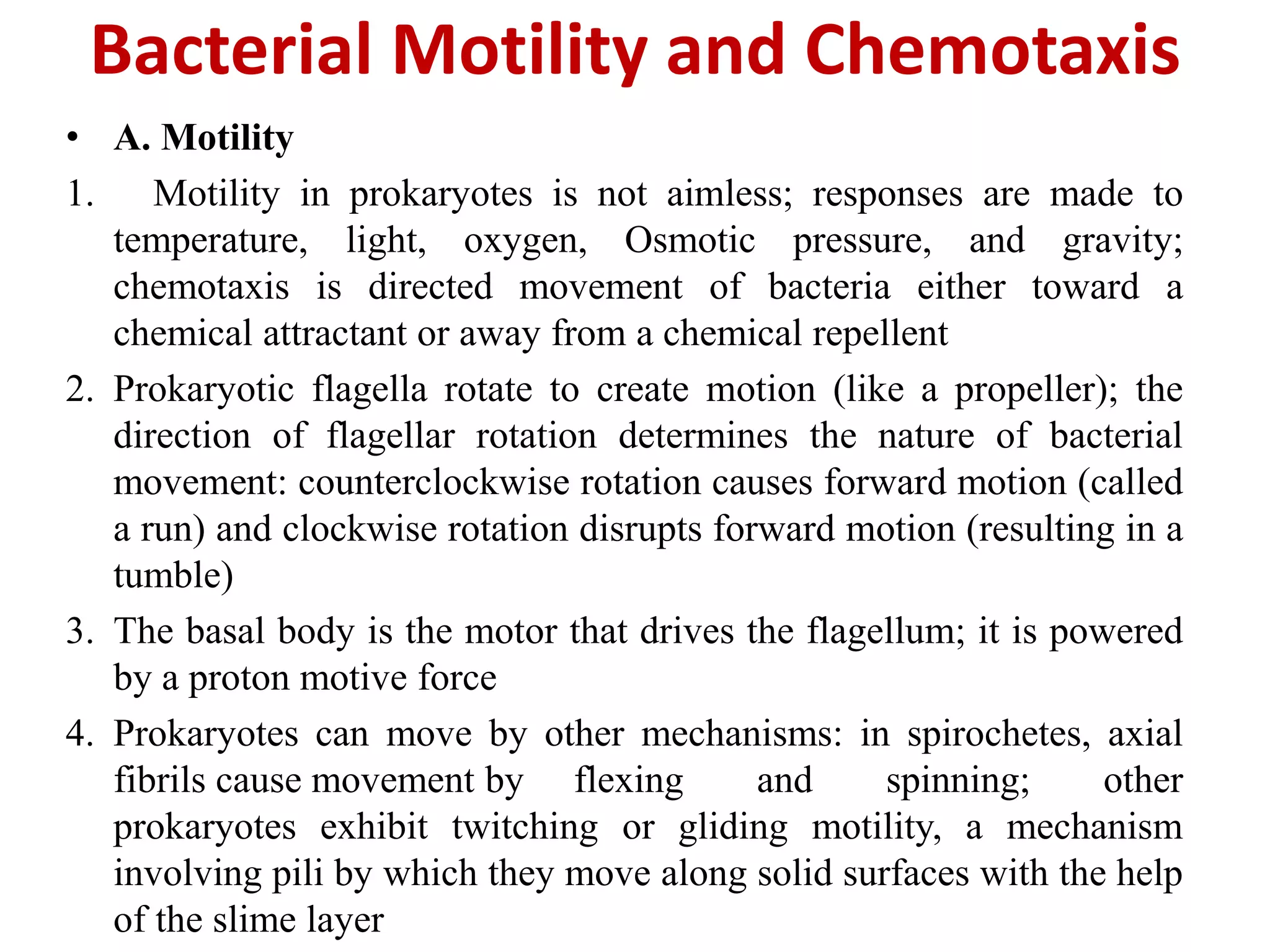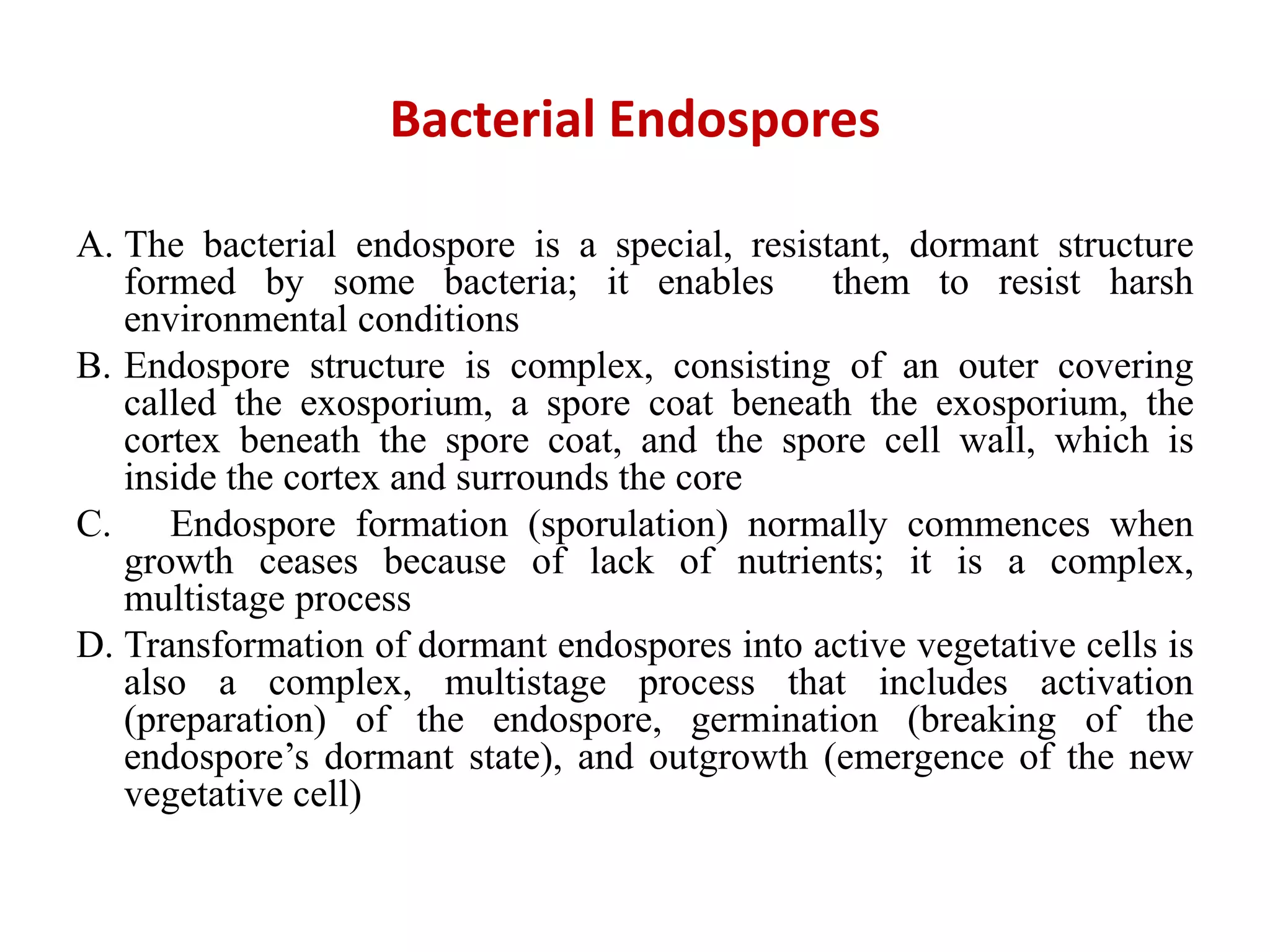Prokaryotes have relatively simple structures compared to eukaryotes. They lack membrane-bound organelles and have a plasma membrane, cell wall, and genetic material not enclosed within a nucleus. Bacteria come in various shapes including cocci, bacilli, and spirilla. Their cell walls differ between gram-positive and gram-negative bacteria. Prokaryotes also possess external structures like flagella, pili, and capsules. They reproduce through binary fission and some form resistant endospores.

